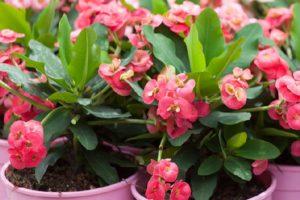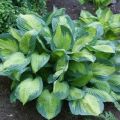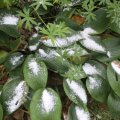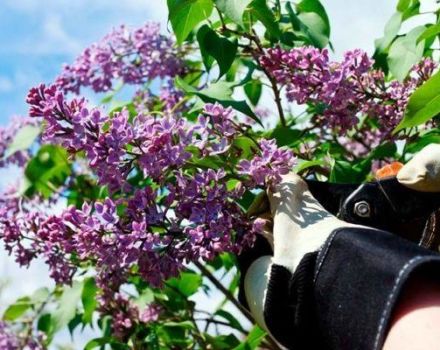How and when is it better to transplant the host to another place in the fall, instructions
In the wild, the plant clings to rock crevices, feels normal in swampy areas, along streams, tolerates cold winters. Perennial herb inflorescences form in clusters, but the smooth, wavy or corrugated leaves flowing like a fountain give the bush a stunning look. Although the plant, whose homeland is East Asia, lives for a very long time, in order to avoid the loss of decorativeness, hostas are transplanted to another place. This is best done in autumn.
Description and features
A perennial from the Asparagus family was first described by a scientist from Austria and is divided into 4 dozen species, each of which is interesting in its own way. The plant lacks a stem, but there are many roots with which the hosta clings to the ground, rocks and gorges. Long peduncles are formed above a rosette, collected from leaves, separated by stripes, spots, strokes of white, yellow, blue shades.
A perennial is grown in a flowerbed next to peonies, combined with irises and lilies, in the garden - under bushes and trees. Hosta flowers are painted in different tones, there are:
- pink;
- purple;
- blue.
In their place, a capsule full of seeds is formed. The bush will grow up to 0.8 m in height, in dwarf varieties - up to 15–20 cm. Hosta is undemanding to the sun, loves shade and moisture.
When to transplant
In one place the plant lives for years, forming a lush bush with powerful branched roots. In order for the hosta leaves to delight with beauty and sophistication, you need to determine the time for transplanting.
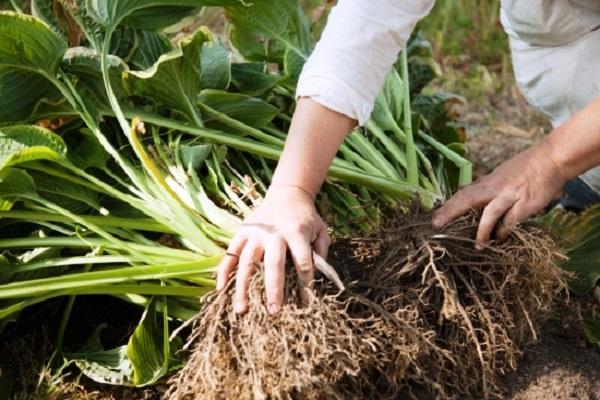
It is moved to another place to avoid:
- thickening of the bush;
- the development of diseases;
- loss of decorativeness.
The plant is transplanted every 5 years, in the first season it is not recommended to divide the rhizome, the hosta does not get used to the new site well and will look unattractive.
When caring for bushes, special knowledge is not required, but it is necessary to transplant the plant within a certain time frame. In mid-latitudes, work is carried out not earlier than the last days of April in spring, in summer - from late August to early September. In Siberia, the hosta is sent to a new location in the last decade of May.
In the Moscow region, it is better to transplant perennials in the fall. Spring is not suitable for all varieties. The month and date for the procedure are determined taking into account the local climate.

Preparation of a new site
The land in the garden where the hosta will be grown is freed from weeds. The sandy soil is diluted with peat. Sawdust is introduced into heavy soil, which they managed to overheat. The depleted land is fertilized with ash and trace elements.
To destroy insect larvae, fungal spores, before planting a perennial, the site is watered with a weak solution of potassium permanganate.
The holes for the plant are dug to a depth of 0.4 m and made wide. An interval equal to a meter is left between the bushes of large perennial varieties, and an interval of 30 cm is left between dwarf species.
Seat selection
Hosta loves shade; a sprawling and lush perennial grows on such a site. When there are light stripes on the leaves of the bush, it can be planted closer to the sun, but the hosta develops more slowly.

Soil requirement
An ornamental plant takes root in different lands, but loves non-acidic loams, dies in an area where water comes close to the surface. In the sandy soil, the hosta blooms profusely, but develops slowly.
Digging
Having chosen a place where the ornamental plant will be comfortable, they remove garbage, rake up the remains of stems and leaves, pull out weeds by the roots, dig up the earth on a shovel bayonet.
Fertilizer
Before planting a perennial, organic matter is introduced into the soil. Wood ash is perfect for this purpose; superphosphate or potassium salt is poured into the prepared holes. If the hosta grows in depleted soil, it is fed three times a season with mullein and mineral fertilizers.
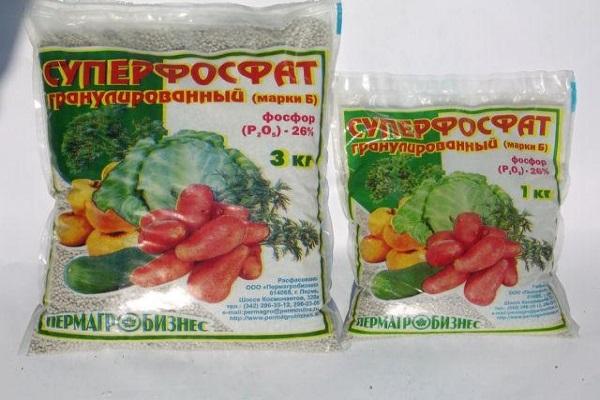
Planting pit
The perennial is placed in holes, which are dug to a depth of 0.4 m. The roots of the host are placed horizontally. For tall varieties, the pit is made more than a meter wide, for medium-sized bushes - from 50 to 80 cm, for dwarf species - 20 is enough. Expanded clay or crushed stone is poured at the bottom of the hole, the drainage layer is covered with humus.
How to transplant correctly
If an adult bush needs to be moved to a new site, before removing it, it is dug in from all sides and, together with a lump of earth, is lifted with a pitchfork.
Hosta is bred by dividing from the main plant:
- First, they check for damage on the roots of slugs.
- The bush is washed and dried.
- The dried parts are cut with pruning shears.
- Dip into a solution of potassium permanganate.
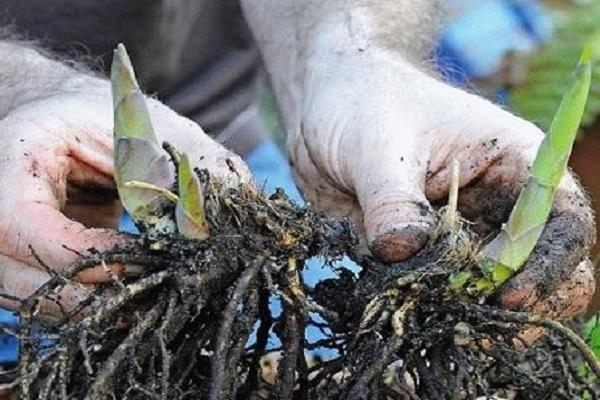
Seedlings with 2 or 3 rosettes of leaves can be separated from the main plant with a disinfected knife. The sections are treated with a fungicide. Hosta will delight with a decorative view next year.
Features of the autumn transplant
The bushes are divided for reproduction in April, when the plant has not yet had time to wake up. However, some perennial varieties do not take root well in spring, and hostas postpone planting to the end of August or September.
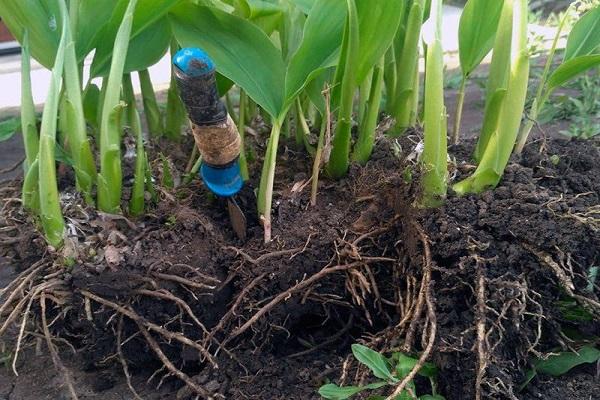
In the fall, it is not recommended to pour fertilizer into the holes, otherwise the flower will grow and will not have time to take root before winter and will freeze in severe frost.
During planting, which in middle latitudes cannot be transferred to October, the leaves are cut off, and the stalks are left no longer than 15 cm. The host is covered with agrofibre or other material that allows air to pass through, but retains heat.
The separated seedlings will last until spring, if they are folded in polyethylene with sawdust and placed in a basement or refrigerator, where it is not higher than +5 ° C. It is not recommended to place the host in the same place where other species or varieties of this perennial grew, since they are infected with the same diseases.
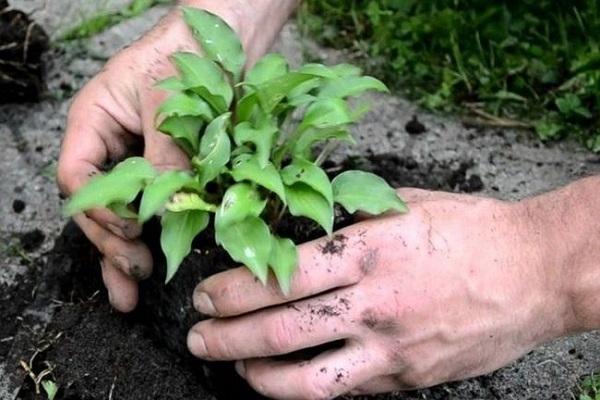
Is it possible to transplant flowering
It is not forbidden to move the host to a new site even in summer, the plant takes root well and takes root quickly. An adult bush is watered abundantly and removed, cleared of a clod of earth. On a flowering perennial, all leaves are not cut off. The plant is planted in a hole, where a drainage layer is arranged and fertilizer is poured. Young bushes are irrigated every 3 or 4 days, covered from the scorching rays of the sun.
